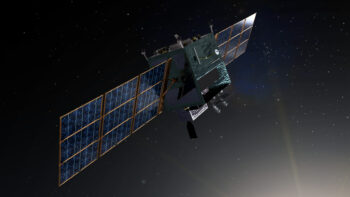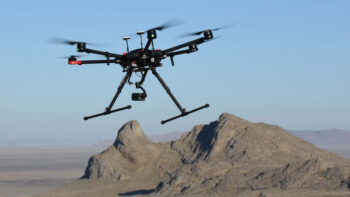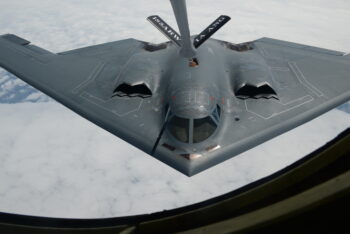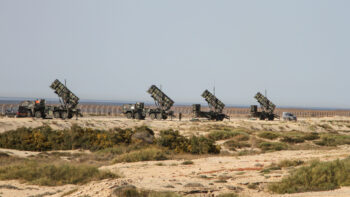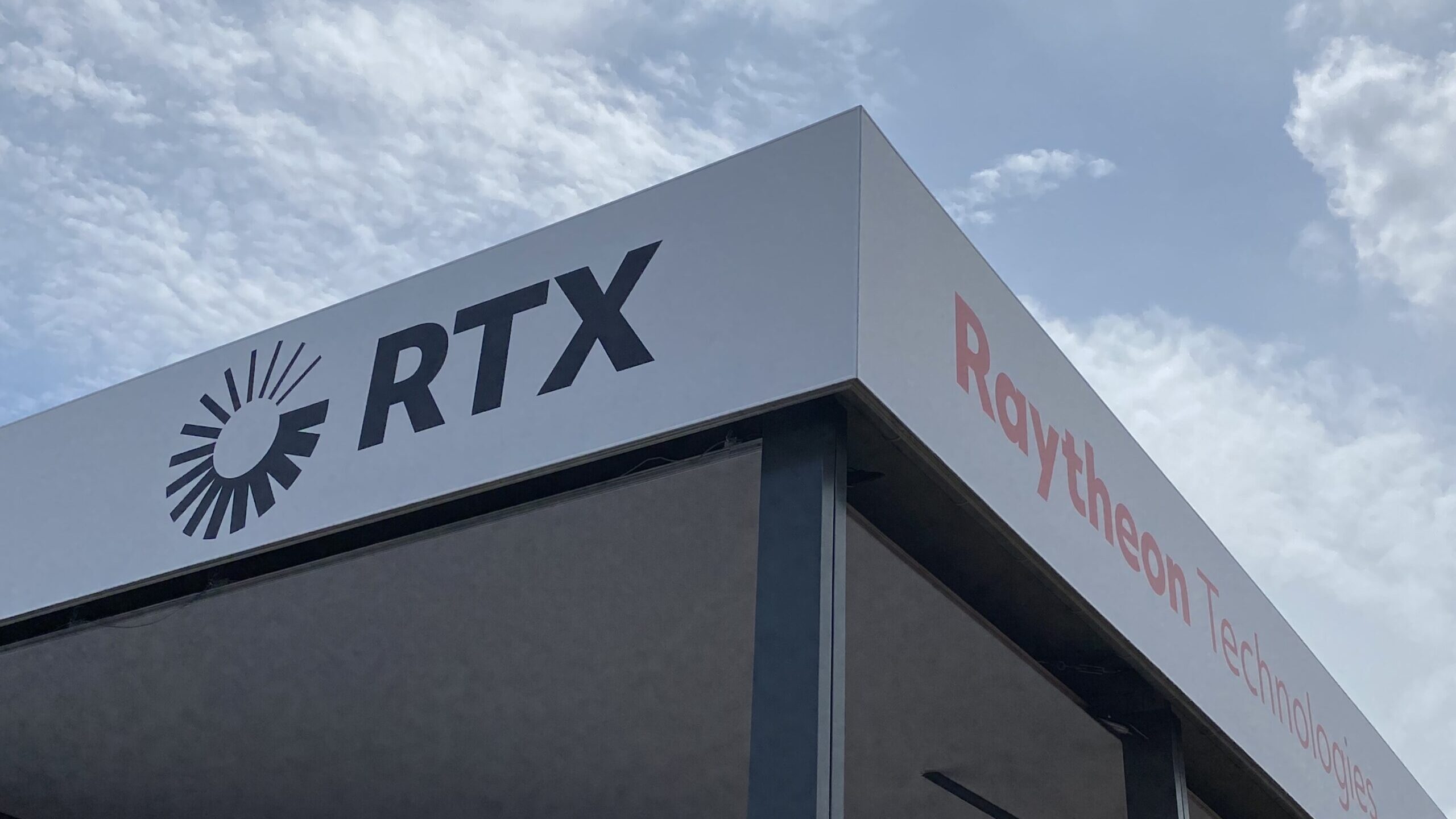
The RTX chalet at the 2023 Paris Air Show shows off both the rebranded company name and its older Raytheon Technologies title. (Aaron Mehta/Breaking Defense)
PARIS AIR SHOW — As part of their push at this week’s Paris Air Show, Raytheon Technologies has rebranded itself as RTX, with the Raytheon brand name sliding down to become one of three major business units inside the parent company.
Think of it along the same lines as Facebook becoming a subsidiary of Meta, or Google suddenly being just a part of a company called Alphabet. RTX (the stock ticker for Raytheon) is the parent, while Raytheon, Collins and Pratt & Whitney are the sub-brands. And while both of the other subsidiaries will have some defense programs (Pratt with military engines, Collins with much of the JADC2 work) the vast majority of defense programs will live within the Raytheon branch, now led by longtime corporate executive Wes Kremer.
“This is really about aligning the businesses within Raytheon, we’re creating three pretty equal businesses of around $25 billion each,” Kremer told Breaking Defense this week. “Raytheon is defense only, there are parts of defense in the other businesses, but it really streamlined our alignment of intercompany work.”
According to Kremer, who previously led Raytheon’s Missile Systems office, reorganizing in this manner meant the company eliminated 60 to 70 percent of situations where there was overlap among business units, which comes with cost benefits. He called it a “mission-first, customer-first kind of mindset.”
Under the Raytheon heading, the company has reorganized itself under eight “strategic business units,” with the goal of creating, where possible, single points of contact for their customer base:
- Air Power, focused on serving the US Air Force
- Naval Power, focused on the US Navy
- Land & Air Defense Systems, focused on the US Army
- Strategic Missile Defense, for the US Missile Defense Agency
- Space Systems, for the Space Force, the Space Development Agency and the Intelligence Community
- Advanced Technology, the future-technology incubator aimed at DARPA, OSD and military labs
- Cybersecurity, Intelligence and Services for offensive and defensive cyber capabilities
- Advanced Products & Solutions is the arm for when Raytheon serves as a secondary contractor for another prime
Kremer was up front that not every program will fit in perfectly with one unit or the other, and that there is a bit of a “you know it when you see it” decision making about which Raytheon efforts go to which business units.
“Take Standard Missile Six,” Kremer said as an example. “It’s primarily a Navy program. But the Missile Defense Agency pays for a lot of the development, and now the Army is deploying them as part of their MRC [Mid-Range Capability]. But we’re still going to build that in naval power, because that’s the main customer.
“So yeah, it’s not perfect. There is no perfect organization… but it did remove a lot of that internal friction,” he said.
With his new role running the entire Raytheon unit, Kremer said he is delegating as much as possible to the strategic unit presidents under him while focusing on the “cross-cutting” issues for the company, including digital engineering, innovation and the one he called “the bane of my existence” — the supply chain.
On that front, “we’re starting to see stabilization, and a few positives,” Kremer said. That starts with labor where “we’re definitely seeing that attrition within our organization is going down, hiring is up, and our suppliers are seeing the same kind of thing. So we’re definitely seeing a stabilization in the workforce on that.”
In terms of materials, Kremer called out microelectronics and rocket motors are the two biggest “constraints” facing the supply chain, but also sees cause for hope there.
“On the microelectronics, we’re cautiously optimistic. We keep hearing, and as other companies have said, that in Q3, and Q4 of this year, we expect a significant uptick in availability of parts and the type of electronics that we use. We’re seeing signs of that,” he said. “Unfortunately, you actually need all the parts to build something, and so you’re only as good as your weakest supplier.
“And that’s the hard part on microelectronics is that’s kind of the front end of the build. So we start by putting those microelectronics on printed circuit boards, and that becomes our circuit card assemblies. And so when you have shortages there, that ripples through all of your production.”
Rocket motors, in contrast, can be put on at the end of the process, and there’s only about a two week gap between getting those into the production line and sending them off to the customer.
However, Kremer acknowledged that “stabilization” of the supply chain back to where it was in 2020 doesn’t account for the increased demand in Raytheon’s weapons that have resulted from Russia’s 2022 invasion of Ukraine.
“Clearly, Ukraine has put an additional demand signal on both us and our entire supply base,” he said. “And so, that’s what we really have to get to, is that ability to — you know, that’s why we have $50 billion of backlog, There’s a lot of [orders] coming in.”

















